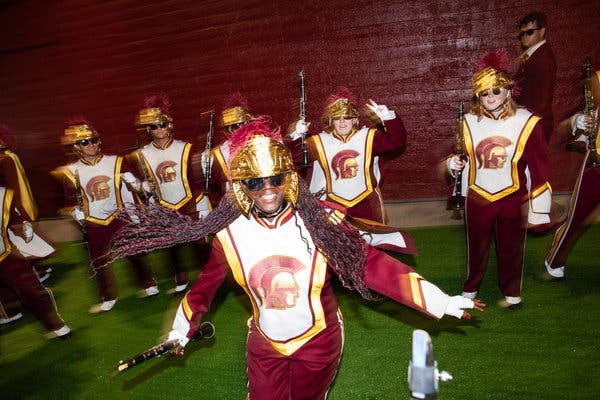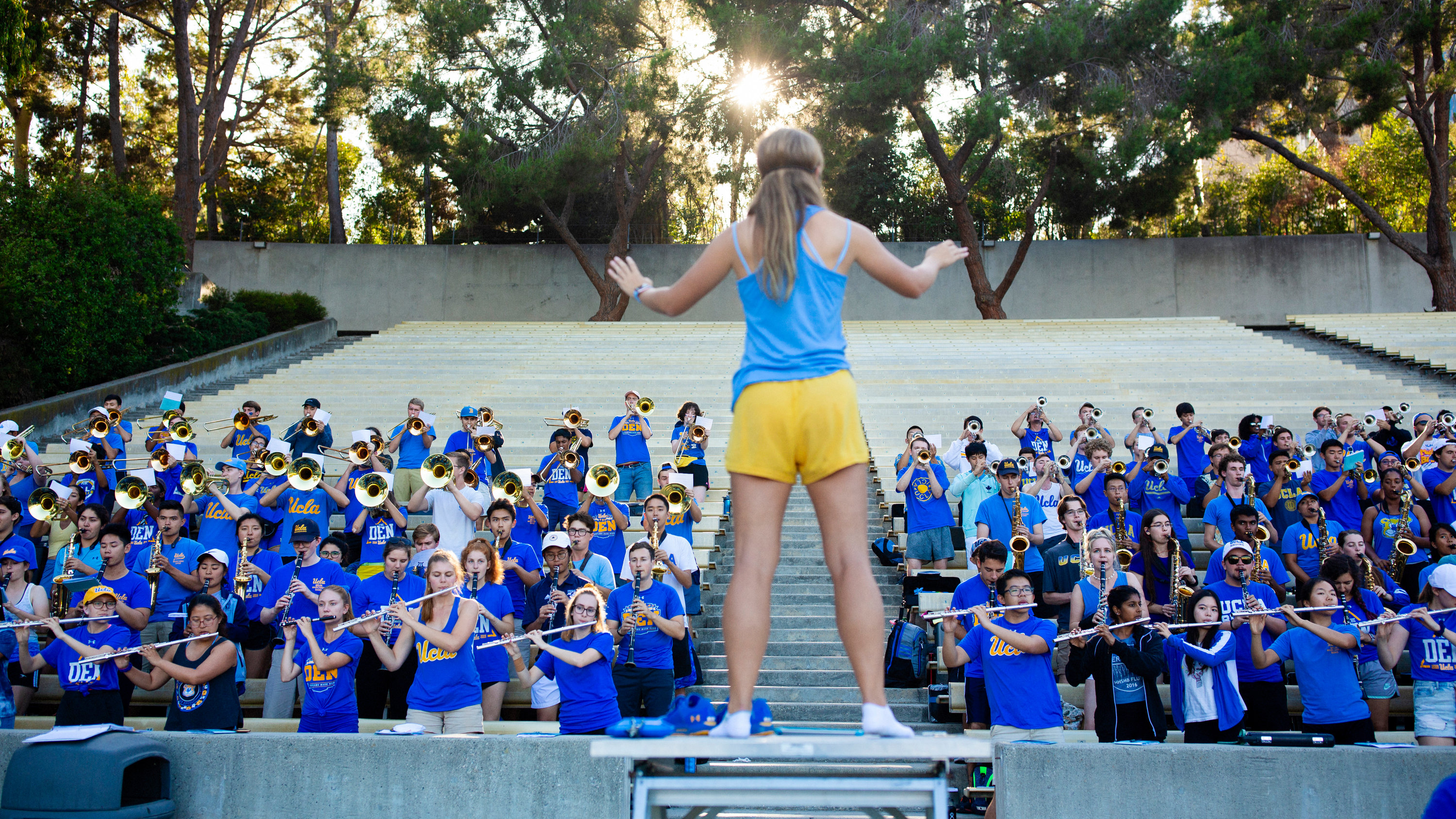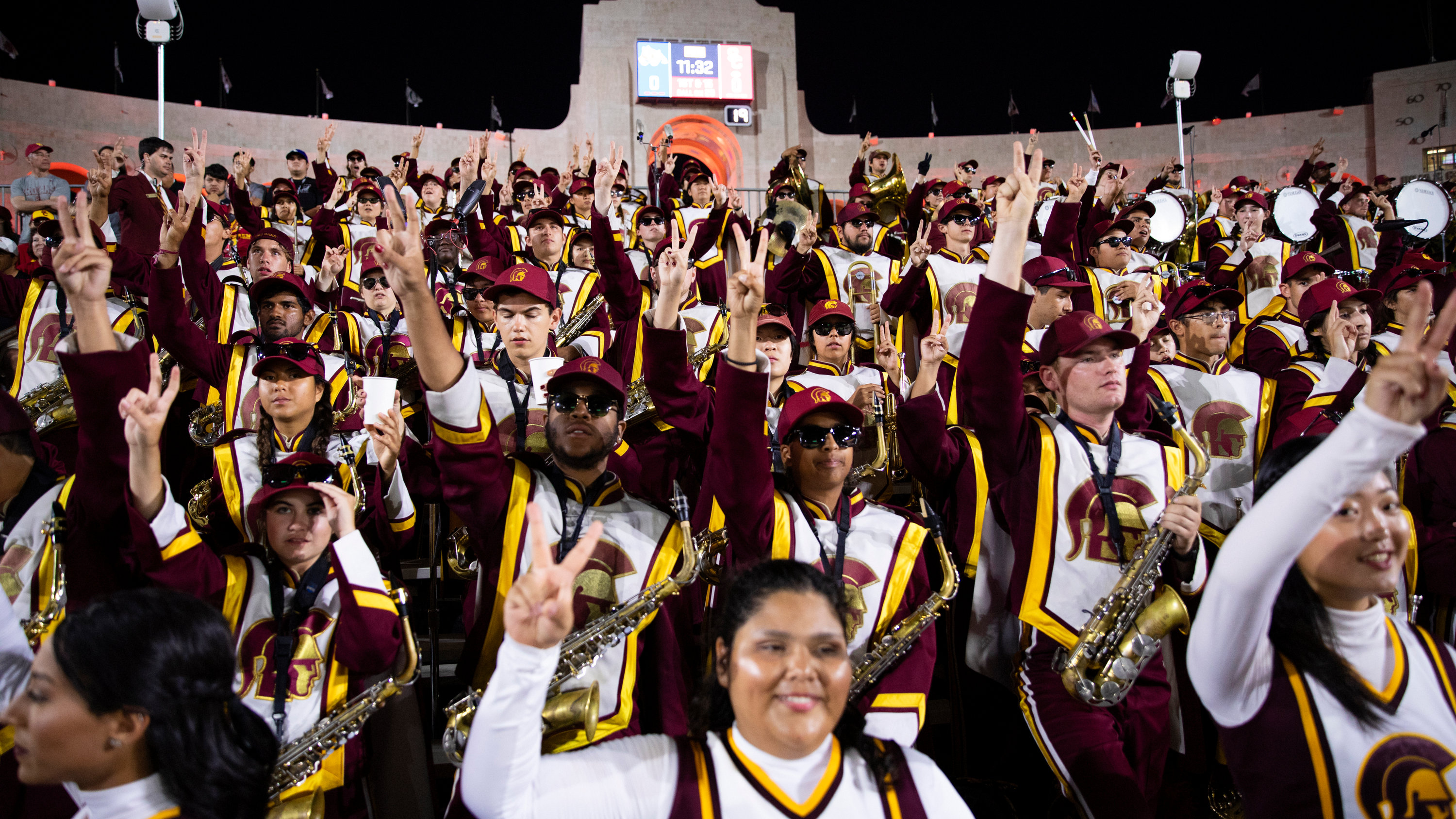
You know that classic high school movie scene in which the cafeteria is broken down into cliques? The jocks, the nerds, the goths, the band geeks?
I can’t speak to the other cliques, but within marching band there are further distinctions. Each section has a reputation based loosely on the personality types drawn to certain instruments and the parts they play on the field.
Trumpets generally own the melody, so the section attracts people who want to be the center of attention, at least musically.
The perfectionist woodwinds — piccolos, flutes, clarinets and saxophones — are invariably drowned out by the brass section, meaning their dedication to musicianship doesn’t rely on recognition. (They also might be the most likely to disagree with these categorizations, but blanket stereotypes are never quite accurate in the movies either.)
Color guard is flashy, and the drum line is most apt to steal the show with solos. Both groups count as the “cool kids,” to the extent that anyone in marching band can be cool. (The 2002 classic “Drumline,” starring Nick Cannon, and thousands of TikTok videos testify to this.)
Then there are the tubas.
Tubas play the bass line. They’re essential but usually relegated to the background. They tend to be pretty chill, maybe because no one really chooses to play tuba; it’s a heavy instrument that sounds weird and looks goofy. Circumstance is what makes a tubist.
At least that’s how I, one of 4,735 freshmen who enrolled at U.C.L.A. in the fall of 2008, became a tuba player.
From the day I started playing euphonium in 5th grade through my senior year of high school, music and band had been the foundation of my social life. Still, I wasn’t sure if that would be the best way to transition from a small, Catholic all-girls school to U.C.L.A. which, by comparison, has tens of thousands of students. I didn’t formally decide to join until the tail end of the summer before my freshman year, when I received a recruitment postcard written by a Tuba Girl.
There were 26 tubas while I was in band. But the Tuba Girls, a foursome who were two years ahead of me, were a fierce unit who had created a mini-sisterhood within a fairly masculine section.
transcript
UCLA Marching Band
-
[INSTRUMENTAL MUSIC]

Because of them I joined the marching band sorority (yes, it’s a thing) and because of them I stuck with band when I got discouraged. Because of them I met the people who’ve remained my closest friends. And before all that, they were the ones who welcomed me to band camp my freshman year, and who helped teach me how to march carrying 40 pounds of metal. They were saints about it too because, and I cannot stress this enough, I wasn’t very good at it.
While I’d been playing brass instruments for years, tuba parts are written in bass clef; I’d only ever read treble clef. Worse, I was a horrible marcher. I have bad depth perception, a distinct lack of coordination and an inability to multitask — a disastrous combination when you need to remember dozens of series of movements (16 steps backward, 12 across, four giant steps forward) while playing music, avoiding other people in your path and not being distracted by a crowd. I very quickly became an alternate my first year, and again my second year.
Still, marching band was safe haven, a microcosm of the student body that I could reasonably navigate. It was where I learned how to be a young adult.
The days could be long. There was always a lot of yelling. Mistakes during shows weren’t brushed off; they were outlined in detail over a loud speaker at the next rehearsal. Somewhere on the internet there’s a video of the top half of my tuba falling onto my face during a performance, and I’ll always be grateful to the section leader who shielded me from a public roasting by our band director.
But I was also exposed to many new things through band, including a lot of music I’d never heard before. There was the ’60s themed halftime show where we all dressed up in tie dye shirts and played “Age of Aquarius” by The Fifth Dimension, “White Rabbit” by Jefferson Airplane, “Hello, I Love You” by The Doors and “Pinball Wizard” by The Who. We did a jazz-themed show, a “West Side Story” show, a funk show and plenty that weren’t as memorable. My favorite, hands down, was the Muse show. (Yeah, football is cool, but have you ever rocked out to “Knights of Cydonia” in the Rose Bowl?)
These days, my actual connection to marching band is limited. I don’t play tuba anymore, and I haven’t been to a college-football game in nearly a decade.
Even my deep, personal investment in U.C.L.A.’s rivalry with the University of Southern California has settled down. Earlier this summer, I spent some time on enemy territory, at the U.S.C. campus, talking to the marching band students during band camp and hanging out with them during a game at the Coliseum. It was very familiar, though the color scheme was different.
Marching band lives on in my life through the people I met along the way. In every city I’ve lived in since graduating from college, marching band people have been the core of my friend group. They’ve been my international travel partners, my roommates and the main reason for the bulk of my wedding travel.
When you’re playing in the band at a big game, some part of you knows, logically, that no one is there to see you. Yes, the band has fans, but it generally performs during breaks from the main sporting attraction. We play for drunk tailgaters while they eat lunch. We perform the pregame show while sports fans make their way to their seats. The half time show happens when the TV networks cut to analysis and fans wait in food and restroom lines. Most people don’t stick around for the postgame show. But that’s O.K. The football part never mattered much to me, anyway.
transcript
USC Marching Band
-
[INSTRUMENTAL MUSIC]








